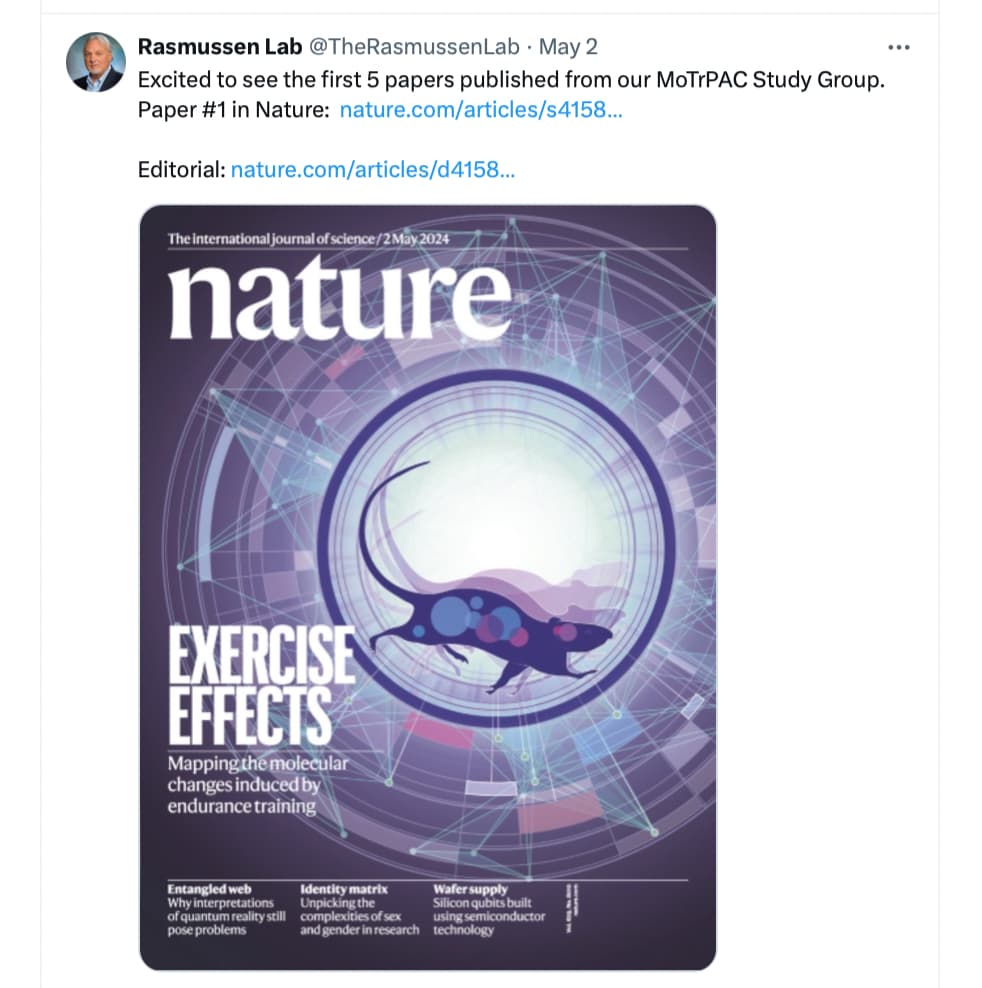May 1, 2024 - By Krista Conger
Exercise. It’s associated with increased muscle strength, improved heart health, lower blood sugar and just about every other physical improvement you can name. But how does regularly puffing away on a treadmill, biking up a steep hill or going for a brisk lunchtime walk confer such a dizzying array of health benefits?
We’re now closer to finding out, thanks to a vast new study led by Stanford Medicine. Researchers conducted nearly 10,000 measurements in nearly 20 types of tissues to uncover the effect of eight weeks of endurance exercise in laboratory rats trained to run on rodent-sized treadmills.
Their results highlight striking effects of exercise on the immune system, stress response, energy production and metabolism. They uncovered significant links between exercise, molecules and genes already known to be involved in myriad human diseases and tissue recovery.
The study is one of a series of papers published May 1 by members of a multicenter research group meant to lay the groundwork for understanding — on a bodywide, molecular level — exactly how our tissues and cells react when we push them to perform.
Related:
Why is exercise good for you? Scientists are finding answers in our cells
Decades of evidence shows that exercise leads to healthier, longer lives. Researchers are just starting to work out what it does to cells to reap this reward.
When Bente Klarlund Pedersen wakes up in the morning, the first thing she does is pull on her trainers and go for a 5-kilometre run — and it’s not just about staying fit. “It’s when I think and solve problems without knowing it,” says Klarlund Pedersen, who specializes in internal medicine and infectious diseases at the University of Copenhagen. “It’s very important for my well-being.”
Whether it’s running or lifting weights, it’s no secret that exercise is good for your health.Research has found that briskly walking for 450 minutes each week is associated with living around 4.5 years longer than doing no leisure-time exercise1, and that engaging in regular physical activity can fortify the immune system and stave off chronic diseases, such as cancer, cardiovascular disease and type 2 diabetes. But, says Dafna Bar-Sagi, a cell biologist at New York University, the burning question is how does exercise deliver its health-boosting effects?
Full Editorial (open access):
https://www.nature.com/articles/d41586-024-01200-7
**Excited to see the first 5 papers published from our MoTrPAC Study Group. **
Paper #1 in Nature:
Temporal dynamics of the multi-omic response to endurance exercise training
Open Access:
https://www.nature.com/articles/s41586-023-06877-w
Source on Twitter: https://x.com/TheRasmussenLab/status/1786027459260858386
